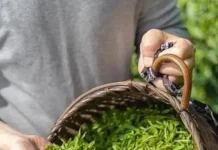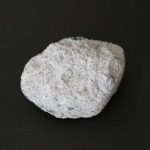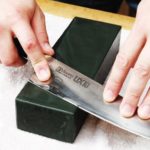Like any other tool, scissors will eventually dull and lose their sharpness over time. But don’t worry, these 5 simple tips and tricks will help bring your scissors back to life, making them as good as new!
1 Glass Bottle, Jar, or Cup
It might sound unusual, but glass is actually an excellent material for sharpening blades.
You can use a glass bottle, a jar, or even a drinking glass from your kitchen. Simply run the scissors along the edge of the glass in a cutting motion, repeating the action until your scissors are as sharp as you’d like them to be.

2 Sandpaper
Sandpaper has a rough, gritty surface similar to that of a sharpening stone, making it highly effective for sharpening scissors.
Just cut the sandpaper multiple times with your scissors, and you’ll be surprised at how well it works!

3 Aluminum Foil
Aluminum foil isn’t just for wrapping food when grilling or baking—it can also help sharpen your old scissors.
Layer 4-5 sheets of foil and cut through them repeatedly with your scissors, and you’ll soon notice your scissors becoming as good as new.

4 Sharpening Stone
When it comes to sharpening blades, a sharpening stone is a familiar tool. The process is similar for scissors.
Start by soaking the sharpening stone in water for about 10 minutes to remove any air bubbles. Then, hold the scissors at a 10-15 degree angle to the stone and sharpen along the length of the blade 4-5 times. Repeat the process for the other blade.

5 Needle
Using a needle is another quick and easy way to sharpen your scissors.
Simply place the needle between the blades of the scissors and cut along the needle’s shaft. This method may take a bit longer to see results, but it’s still an effective way to sharpen your scissors.

Now you know five easy ways to sharpen your scissors without needing a professional sharpener or special tools. Give these methods a try, and happy cutting!
Is Cooking with Aluminum Foil in an Air Fryer Healthy?
Using a Sharpening Stone: Tips for Choosing and Sharpening Your Razor
Sharp knives can make a huge difference to your kitchen experience, so don’t forget to keep them sharpened! Electric Appliances XANH’s “Tips for the Kitchen” section provides detailed advice on how to choose the best knife sharpener stone to keep your tools in good condition. Read on to find out more!







































